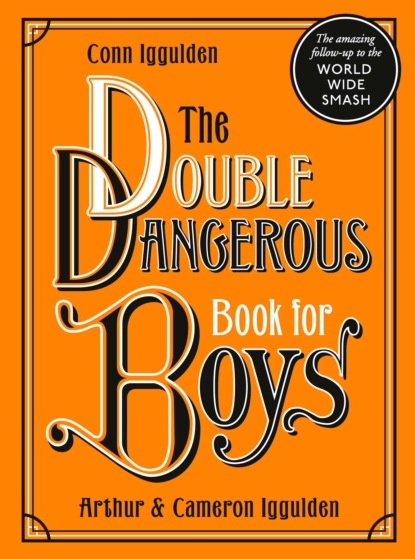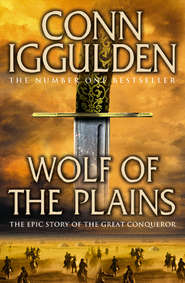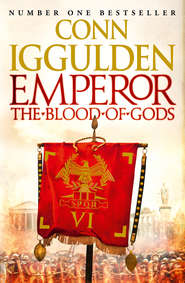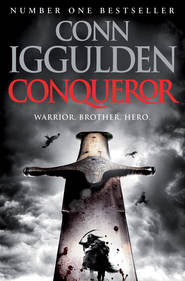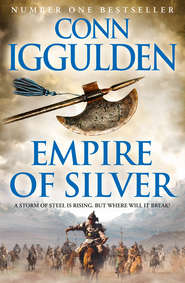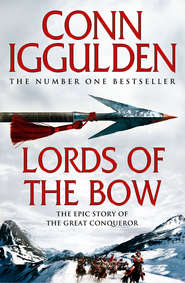По всем вопросам обращайтесь на: info@litportal.ru
(©) 2003-2024.
✖
The Double Dangerous Book for Boys
Настройки чтения
Размер шрифта
Высота строк
Поля
Antarctica has never had an indigenous population. It is a frozen wilderness larger than China. A range of mountains cross its heart and winds there can reach speeds of 200 miles an hour as they roar and scour in blizzards of astonishing ferocity. It has a good claim to being the most hostile place on earth. In 1911, Robert Scott launched his own ill-fated run at the Pole, reaching it in January 1912, only to discover the Norwegian Roald Amundsen had beaten them to it. Scott and his team died on the return journey. The story of that brave expedition and the extraordinary character of those men is told in the first Dangerous Book. It didn’t seem possible to include two ‘Extraordinary Stories’ of Antarctic exploration at that time – but the world turns and here we are, with a story that deserves to be told.
As the Pole had been reached, Shackleton set his cap to be the first to cross the entire continent on foot. The plan was to sail as far as possible through sea ice, set out on foot to the Pole, then continue through to the other side. It was, to say the very least, a massive undertaking. It was simply impossible for his men to carry enough food to keep them alive over such distances, so Shackleton needed two ships. Endurance was a solid Norwegian three-master, designed in oak to smash through half-frozen seas. The captain would be a New Zealander named Frank Worsley. Endurance would land as far south as possible and, if necessary, provide a base during the first hard winter. The second ship, Aurora, would make key supply drops on the other side of Antarctica. It became the ‘Endurance’ expedition, a name taken from both the ship and his family motto: Fortitudine Vincimus – ‘Through endurance, we conquer’.
The trip was mostly privately funded and Shackleton himself wrote to those who might donate. Public schools raised money for the dogs he would need and he named each dog after the school which had raised the funds for it. Given that he had seventy dogs, he ran out of those names fairly quickly. After that, the dogs were called things like Satan, Bosun, Sally, Fluffy, Sailor and Shakespeare.
Shackleton also asked a wealthy cloth manufacturer named James Caird for a relatively small amount. In the end, Caird donated £24,000, a sum worth millions today. Shackleton had that effect on those he met, many times. In gratitude, one of three lifeboats was named James Caird in the man’s honour, and a stretch of Antarctica is known today as the Caird Coast.
Shackleton advertised for men willing to endure years of harsh conditions. He wrote to The Times and almost five thousand hopeful replies came in, which says something about the age and culture. In the end, he chose fifty-six, in two teams of twenty-eight. Preparations continued right into the summer of 1914 – and in Europe, Germany invaded Belgium and Britain declared war in response. World War I began.
Shackleton immediately sent a telegram, offering himself, his men and both ships to the war effort. Though he had spent years planning the expedition, he gave it all up the moment war was declared. However, the First Lord of the Admiralty understood there was more to life than war and sent them on. That was a young Winston Churchill. By such choices and such men, history is written – for good or ill.
Shackleton described the single-word order from Churchill – ‘Proceed’ – as laconic. Laconia was the region of Greece that gave birth to the Spartans, famous for their courage and never wasting words. When Philip II of Macedon threatened them, asking if he should march to Sparta as friend or enemy, they sent a one-word message: ‘Neither.’ Furiously, he tried again: ‘You are advised to submit without further delay, for if I bring my army into your land, I will destroy your farms, slay your people and raze your city.’ Their reply was once more a single word: ‘If.’ In the end, he did not threaten them further and the word ‘laconic’ came to be used to describe a dry, brief response.
In August 1914, Endurance set sail from Plymouth on the first leg, to Buenos Aires in Argentina, then headed to the active whaling island of South Georgia – the last piece of inhabited land before Antarctica. The plan was to make for the coast of Antarctica and spend the winter months in camp, growing used to the conditions and waiting for the few months of spring when a crossing might be possible. They set off from South Georgia in December 1914, taking Endurance into the Weddell Sea, a dangerous graveyard for ships. The sea froze in great sheets as they went further and further south. At times, it seemed as if they were sailing across white land, breaking ice as they went.
January 1915 was spent forcing Endurance through ice floes. The men used a system of semaphore to signal to the captain at the helm, dodging round huge pieces of ice and breaking through others. The whalers back at South Georgia had said the pack ice was unusually far out that season – and so it proved. After days of slow progress searching for paths through, the ice grew so thick that even the reinforced hull of Endurance, combined with powerful engines, could not force the ship any further. Endurance was gripped in solid ice that froze hard, cracking and groaning against the timbers. Shackleton had no choice but to wait for spring. He had the sled dogs moved onto the surrounding ice and the men shot seals to feed them. They were at the 77th parallel of latitude, but moved north again as the ice floe they were on drifted, undoing all their labours. It was, in those months, the most isolated spot on earth.
To pass the time, Shackleton involved the men in races and competitions on the ice, binding them together in hardship. He dispensed with the normal ship’s routines, understanding instinctively that he didn’t need to enforce ship’s discipline with men he had hand-picked for the expedition. To do this, he redesignated the ship as a ‘Winter Station’. The crew kept their spirits up by hunting seals and training the dog teams. It was a bleak existence even so.
After months of unbroken darkness, the Antarctic spring in October brought hope – and then disaster. As the pack ice began to break up, vast pressures built against the hull of Endurance, crushing it remorselessly. Shackleton and the men tried to repair the broken beams, but the ship had to be abandoned. It sank from sight in November 1915, taking their hopes of crossing the continent with it. The men were left on the ice, with tents, dogs and supplies, but with no way of reaching their goal.
One reason Shackleton is held to be an example of a great leader of men is the decision he made then. Though everything he had dreamed of for years had been taken from him, he changed plan and accepted the new reality. He understood he could not complete the expedition – instead, his task was to save his crew. Not a soul knew they were there, on floating ice, at the bottom of the world. Without extraordinary intervention, all that lay ahead were starvation and death. The men used planks taken from the Endurance to raise the Union Flag – to give them hope. They were in British territory, but utterly alone and impossibly far from help.
John Frost Newspapers/Alamy Stock Photo
As the ice moved, the original camp proved too unstable and so they made another one further back. They began to ration food and burn seal blubber to cook and keep warm, while Shackleton planned a way out. They had kept the three lifeboats from Endurance – the James Caird, the Stancomb Wills and the Dudley Docker – and hauled them for seven miles to a more stable spot on the ice they named Patience Camp – while they waited for spring to advance.
In April 1916, the ice broke up and they took to the boats and the open sea, making for Elephant Island, an uninhabited flyspeck named after the enormous seals that rested there. The crew navigated and sailed the three small lifeboats for five days and nights in brutal cold, always wet and frozen by spray from the waves. When they were forced to row, the oars grew thick with ice. Yet when they reached the tiny island, they laughed and cheered and picked up pebbles from the shore – the first time they had set foot on true land for a year and a half.
Despite having reached solid ground, their predicament was still unknown. To get back to civilisation would require a much longer journey. Shackleton chose to make for the island of South Georgia. The Falkland Islands were closer, but the winds blew from that direction and the lifeboats were too frail to beat up against them. Though South Georgia was 800 miles away across wild and open sea, it lay with the winds. Shackleton knew the whaling stations there would put them in touch with civilisation – if he could reach them.
The James Caird was the largest and heaviest of the three lifeboats, so was chosen for the job. Shackleton needed Worsley for his skill at navigation. He asked for volunteers to form the rest of a crew of six. They would risk their lives to bring back a rescue party for those they left behind. They took supplies for just four weeks. It is difficult to imagine how it must have felt to watch that tiny boat set off. The men on the island had seal meat and could camp under the hulls of the other two boats, but Elephant Island was still a bleak and inhospitable place. They remained in polar waters, and the terrible cold, gales and hard conditions wore them down.
On 24 April 1916, Shackleton, Worsley, Tom Crean, Harry McNeish, Tim McCarthy and John Vincent set off in the James Caird. They had rigged canvas and wood to give a little shelter on the open boat – enough to allow them to use a primus stove. Each man took two-hour spells at the tiller or kept a four-hour watch, while the others tried to rest in sodden sleeping bags. For sixteen days they were never dry. Shackleton’s account of that voyage remains one of the all-time great stories of seacraft and survival. They ran north into continuous gales and storms, so that the little boat climbed mountainous waves that made it look like a child’s toy. When the rough seas opened seams in the boat, they had to bale at all hours, though the cold meant they were always exhausted. There was never enough fresh water, never enough food or sleep. The little boat grew sodden and heavy under the weight of ice and they had to spend hours each day chipping it away.
Worsley navigated using a sextant when there was sight of the sun or stars, as well as dead reckoning – a master sailor’s estimate of speed, time and bearing to give distance and position. In that way, he brought them across open sea to South Georgia, though the winds were blowing a savage gale around the island and the sea was too rough to land at first. The men on the boat had grown weak and Shackleton decided he must land or see them die. He tacked back to bring the James Caird onto the south of the island, the only place he could reach.
With the boat leaking and the seas still running high, Shackleton knew how lucky they had been to make safe landfall. Some of the six were not doing well. Vincent and McNeish were weak from exhaustion and frostbite. Shackleton ordered McCarthy to stay and look after them. The waves were far too rough to consider venturing out into them again, even if the boat had not been leaking and made fragile by the constant battering. Shackleton knew that he had been fortunate to survive the extraordinary journey. So instead of trying to sail around South Georgia to the north side, he made a decision to cross the island on foot. It was a risky choice. The island had never been explored and no one knew what lay in the interior. Shackleton set off with Captain Worsley and Second Officer Crean on Friday 18 May.
The James Caird
Courtesy of the author
These three men crossed the mountain range of South Georgia, walking doggedly on with the fate of the twenty-two on Elephant Island and their three boat companions on their shoulders. They walked and climbed to the point of complete collapse, but kept going. Shackleton asked nothing more from the others than he gave himself and, by his uncomplaining endurance, inspired the others to the same.
On the morning of 20 May 1916, they climbed the last ridge and sighted the whaling station below. They had marched for thirty-six hours, though they had barely recovered from the sea journey. Yet the odyssey was at an end. Pausing only to shake hands, the three men climbed down a frozen waterfall to get close enough to signal the astonished whalers. Filthy and bearded, they were not recognised at first by those who had met them on the way out.
They picked up the three on the other side of the island, as well as the James Caird that had brought them so far. Yet winter had come again – and the sea to the south had begun to freeze into the same pack ice that had trapped and crushed Endurance. Shackleton made four attempts to reach the men on Elephant Island, but each one was defeated by savage winter conditions.
In August 1916, the sea ice began to break up once more – and Shackleton set out in a small steamship he had borrowed from the Chilean government. The ice had thinned enough for him to get through and he reached Elephant Island at last, desperate for some sight of those he had left behind.
When the waiting men saw the ship, they lined up on the shore. On board, Shackleton counted them aloud in joy, one by one. They had four days of food left and had been so certain ‘The Boss’ would return that for weeks they’d begun each day by rolling up their kit for a quick rescue. They had never lost faith that Shackleton would come for them – and he did.
In 1917 they returned to a world that was still at war – and a world that had discovered how terrible war can be. Most of his men signed up to fight and, of course, some of them did not make it home again.
Shackleton was brutally honest and blunt about the expedition being a failure. Yet the rescue of his men is still one of the great tales – of endurance, courage and honour. He did not let them down.
Shackleton wrote his account of it in the book that forms the main source for this chapter, still in print as South: The Endurance Expedition. He gave the copyright of that book to his creditors to pay debts and tried to live simply with his wife. Yet he was unhappy in the real world, away from the ice. It was not long before he was planning a return.
In 1921, Shackleton sailed back to the southern continent as commander of the Quest scientific expedition. With Antarctica in sight, he had a heart attack and died. When news reached his wife, she sent back the instruction ‘Bury him where he was happiest.’ His grave is on South Georgia, where he knew at last that he had reached civilisation – and saved his men.
As a postscript, the James Caird lifeboat was brought back to England. Shackleton gave it to an old school friend in exchange for him sponsoring the Quest expedition. It was then donated to the school both men had known: Dulwich College in London. It can be viewed today, with prior appointment, on any Tuesday. It is a small, frail boat that has known the howling gales and vast swells of the Antarctic oceans.
OLD BRITISH COINS (#ulink_c472199d-25af-51c4-94b7-01e7fa8aa557)
Left. Ivan Vdovin/Alamy Stock Photo; Right. Simon Evans/Alamy Stock Photo
Each generation loses some old knowledge – and learns something new. Along with death and taxes, this is one of life’s certainties. Over passing centuries or millennia it can lead to great shifts in ‘general knowledge’. What was once known to all can become the knowledge only of specialists – or lost for ever.
Our task is not to preserve the past for its own sake. There are many thousands of books and plays that refer to the pre-decimal coinage of Britain. We include a brief sampler here of those coins. It would not feel quite right if no child today knew that there were once twelve pennies in a shilling, or two hundred and forty pennies in a pound.
The first coins to circulate in Britain were gold staters from ancient Gaul, imported around 150 BC. The designs suggest they were influenced by Macedonian coins of King Philip II, father to Alexander the Great. Coin production in Britain began some fifty years later, around 100 BC. These ancient coins, like those of Rome, were made of gold, silver or bronze. The three metals seem to form the basis of all ancient coin systems. Gold is eternal – it does not rust – so has always been a symbol of perfection and high value in almost every human society. Silver is attractive, but goes black very easily. Like bronze, however, silver has a relatively low melting point and is easy to mine and work. That probably explains its popularity, along with tin and copper. Those metals are all soft enough to be hand-stamped with a hammer. In the early British coins, the images stamped on them were very varied. They included horses, helmets, faces, stags, wreaths and a host of other pictures without words. Most people could not read, after all.
From the first Roman invasion in 55 and 54 BC, Britain came into the orbit of the Roman world. After AD 45, Roman coins circulated as well as native ones. The metal itself had value, so could be exchanged for others with a different design or origin. The Cantii tribe in Kent produced their own coins, as did the Trinovantes, the Catuvellauni and the Iceni in Norfolk under Boadicea, who led an uprising against the Romans in the 1st century AD.
The Roman empire produced many coins – not only for all its emperors, but also to mark military successes and key festivals. As well as gold aureus coins, they issued silver denarius coins (denarii in the plural: den-ar-i-eye) and sestertius coins (sestertii: sest-ur-tee-eye) in silver or brass. There was also a bronze coin called an as.
After the Roman legions left Britain and their last officials were expelled in AD 410, coins were still minted north and south – the silver penny became virtually the sole coin in common use for at least five centuries. It was still referred to as a ‘denarius’, or ‘d’ for short. Though it became a copper coin in later centuries, the habit of labelling a penny as ‘1d’ continued right up to decimalisation in 1971.
Rulers of small kingdoms such as Mercia or East Anglia would issue their own silver coins, as did established Viking invaders around York. By the 10th century, King Æthelstan, the first king of England and Scotland, organised the mints and closed down a lot of fake coin shops.
After 1066, King William of Normandy maintained the Anglo-Saxon regional mint system, but over time it became more centralised. Coins that could be cut into halves and quarters were a brief experiment, but not popular. In 1180, Henry II put his name ‘Henricus’ and ‘Rex’ (king) on his coins, though it did not become standard practice for his sons Richard and John.
Short-cross coin of Henry II, issued 1180–1189
AMR Coins
By the 13th century, under King Edward I, the minting of coins had become a royal activity and was restricted to London, Canterbury, Durham and Bury. In 1279, new coins were produced: the first halfpenny, a ‘farthing’ quarter-penny and a groat, worth fourpence. The name of ‘Edward’ appeared on them all.
A fourpenny piece – the ‘groat’
Courtesy of the author
In the 14th century, during the long reign of Edward III, gold coins made a return, with the introduction of the gold florin and the gold noble and half-noble. Intricate designs could be stamped on gold and they were still the symbol of great wealth. Silver pennies, halfpennies and farthings also continued to be issued. Those were the main denominations up to King Henry VI, Edward IV and the Wars of the Roses, when the wonderfully named gold angel and half-angels were also issued – a reference to the design of the Archangel Michael killing a dragon stamped on the coin.
The gold ‘angel’
Left. Ashmolean Museum, University of Oxford, UK/Bridgeman Images; Right. Royal Collection Trust © Her Majesty Queen Elizabeth II, 2019/Bridgeman Images





